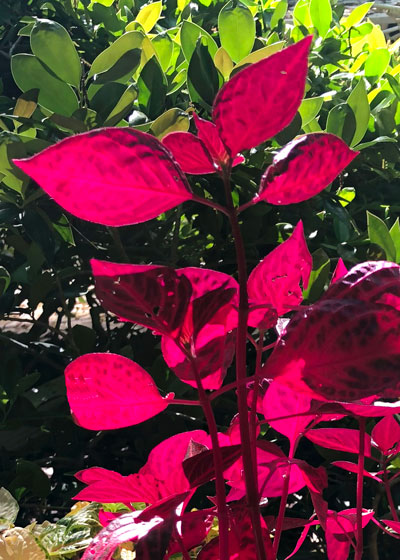Bloodleaf Is Old Friend
When I was a kid any kind of bright color appealed to me. Flowers were obvious, but when I could find a plant with colorful leaves, that was like buried treasure.
Coleus, caladiums, crotons and copper plants were four “C’s” that made up much of my color garden, but somewhere I also found an Iresine – a bloodleaf. It might have been in the trashcans at the TAMU floriculture greenhouses. I was known to open their lids as I passed by in the evenings just to see what might have been tossed.
It might have been down at Walton’s in Conroe. Carmen Walton had the most incredible collection of odd little foliage plants I’d ever seen. He was really kind to a young horticulturist (13) whose dad had to drive him down to look around. Those trips were absolute highlights for me. It could have been there.

Somewhere, I found one. And I’ve grown bloodleaf pretty much ever since. And I added its sister, the yellow-and-green-with-a-touch-of-red plant with the beautiful name “chicken gizzard plant.” I have them both.
There’s been breeding work going on to find brighter colors, bigger leaves and more uniform growth habits of the red bloodleafs.

The pertinent facts…
• Iresine herbstii, commonly known as “bloodleaf” or “beefsteak plant.”
• Native home Brazil.
• Annual to 18 to 24 inches (taller in South Texas when grown in frost-free areas).
• Commonly grown in pots where it can be kept at 15 to 18 inches.
• Great poolside and in patio pots near entries.
• Needs morning sun for best foliage color, but protection from burning afternoon sun in the summer.

• ‘Aureoreticulata’ is a yellow-variegated type with green leaves with yellow veins that’s known as “chicken gizzard plant.”
• Keep consistently moist for best growth.
• Pinch growing tips out to keep plants compact and full.
• Protect from temperatures in low-30s and colder.

